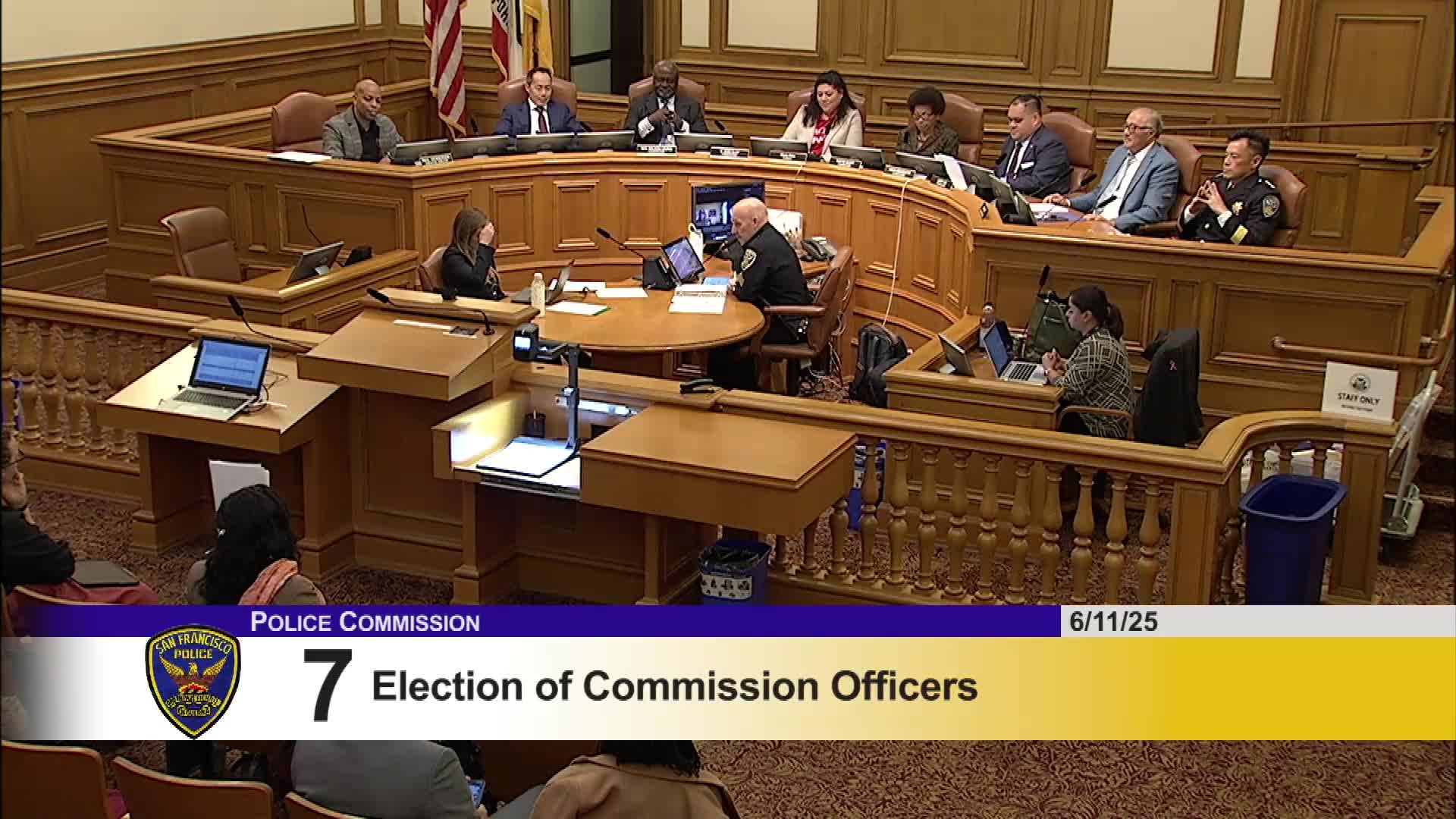San Francisco Police Department reveals new benchmarks for disparity analysis in stop data
June 11, 2025 | San Francisco City, San Francisco County, California
Thanks to Scribe from Workplace AI and Family Portal , all articles about California are free for you to enjoy throughout 2025!

This article was created by AI using a video recording of the meeting. It summarizes the key points discussed, but for full details and context, please refer to the video of the full meeting. Link to Full Meeting
McGuire provided a brief update on the department's ongoing efforts to improve data transparency, announcing the launch of a new stops dashboard. This innovative tool, now live, will allow the public to access real-time metrics previously found only in quarterly reports. The dashboard will initially focus on stop data, with plans to expand to include use of force and arrest statistics in the future. This shift aims to make critical information more accessible and user-friendly for residents, marking a significant step towards greater accountability in law enforcement.
Captain Sean Frost then took the floor to delve into the newly developed disparity benchmarks, which are designed to provide a more nuanced understanding of police stops in relation to crime victimization. The existing census benchmark, which compares stop data to the city's residential population, has been criticized for its limitations. To address this, the department introduced three additional metrics: the risk-adjusted disparity index, the suspect-adjusted disparity index, and a traffic analytic layout. These benchmarks aim to offer a clearer picture of how different demographic groups are represented in police stops compared to their likelihood of being victims or suspects of violent crime.
The risk-adjusted disparity index focuses on the likelihood of victimization by violent crime, while the suspect-adjusted index compares stops to the reported suspect population. The traffic analytic layout uses data from not-at-fault collisions as a proxy for the driving population, providing a more comprehensive view of traffic stops. These new metrics are intended to enhance public understanding and internal awareness of policing practices, fostering a more informed dialogue about public safety.
However, the meeting also highlighted the importance of data integrity. Commissioner Benitezdzuk raised concerns regarding the reliability of stop data, referencing a recent audit that identified discrepancies in the data collection process. The commissioner emphasized that the effectiveness of these new benchmarks hinges on the accuracy of the underlying data. McGuire assured attendees that the analyses presented were based on data unaffected by the audit's findings, underscoring the department's commitment to continuous improvement in data collection and reporting.
As the meeting concluded, it was clear that San Francisco is taking significant strides towards enhancing transparency and accountability in policing. The introduction of these new benchmarks and the commitment to improving data integrity signal a proactive approach to addressing disparities in law enforcement practices. The city’s efforts may not only reshape public perception but also pave the way for more equitable policing strategies in the future.
Converted from City of San Francisco - Video Open Video Only in Windows Media Player - Jun 11, 2025 meeting on June 11, 2025
Link to Full Meeting
Comments
View full meeting
This article is based on a recent meeting—watch the full video and explore the complete transcript for deeper insights into the discussion.
View full meeting
